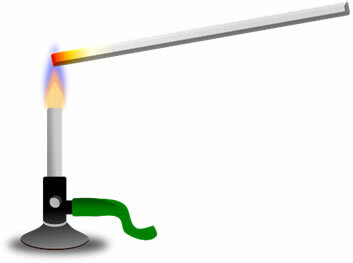Definition of Specific Heat
Inhibition String Theory / / April 02, 2023

Industrial Engineer, MSc in Physics, and EdD
The specific heat (c) is defined as the amount of energy required according to the increase in temperature of a unit mass of substance in a unit of temperature. It is also known as thermal capacity or specific heat capacity.
It is a physical quantity that depends on the state of matter, since the specific heat of a substance in a liquid state is not the same as that of the same substance in a gaseous state. Likewise, the pressure and temperature conditions at which the material is found influence its specific heat. Basically, it is an intensive property of matter that refers to the thermal capacity of a substance, since it provides a value of the thermal sensitivity of a material to the addition of energy.
Did you know…? The term specific heat arose at the time when the branches of Mechanical Physics and Thermodynamics evolved almost independently; however, at present, a more appropriate term for specific heat would be specific energy transfer.

If hot coffee at the same temperature is poured into two glasses: one made of Styrofoam (anime) and the other made of aluminum and both glasses are held in the hands, it will be perceived that the glass of Aluminum feels hotter than Styrofoam, which implies that more heat needs to be added to the Styrofoam cup so that its temperature increases like that of the Styrofoam cup. aluminum.
specific heat formula
If Q is the quantity of energy exchanged between a substance of mass m and its surroundings, causing a temperature variation ΔT (Tf – Ti), we have:
\(c = \frac{Q}{{m.ΔT}}\)
where c is the specific heat.
From this expression it can be deduced that the specific heat units will be:
• In the International System, the specific heat c = (J/kg. K)
• In English system, c = (BTU/lb-m.ºF)
• In other systems, it is also common to express c = (Cal/g.ºC)
On the other hand, it can also be observed that the higher the specific heat of a substance, the lower its temperature variation for a given amount of energy supplied. For this reason, if you want a material that heats up easily, you should choose one that has a low specific heat.
Note: it is important to clarify that the specific heat refers to the amount of energy to increase the temperature, heat being a particular form of energy transfer, but not the only. For example, you can increase the temperature of a substance by doing mechanical work on it.
Examples of specific heat in materials
Under controlled laboratory conditions, it has been possible to determine the specific heat of a wide variety of substances, which allows comparisons and selection of materials according to the application particular. The following table is a sample of the specific heats for some materials (at atmospheric pressure and 25 ºC):
Substance c (J/kg. K) c (Cal/g. ºC)
Water (15ºC) 4186 1
Ethyl alcohol 2438 0.582
Sand 780 0.186
Copper 385 0.091
Ice (-10 ºC) 2220 0.530
Oxygen 918 0.219
Hydrogen peroxide (H2O2) 2619 0.625
Glass 792 0.189
Aluminum 897 0.214
Wood 170 0.406
Olive oil 1675 0.400
Refractory brick 879 0.210
Note: as can be seen, water is one of the substances with the highest specific heat, which reaffirms the importance of this liquid for regulating the temperature of our planet.
Example 1: How much energy must be transferred to a 2 kg mass of water to increase its temperature from 15 ºC to 90 ºC?
Solution: From the previous table it can be obtained that the specific heat of pure water is 1 Cal/g.ºC, so that from this value and the data provided, the energy Q can be cleared:
The amount of heat is:
Q = c ∙ m ∙ ∆T
This implies that 150,000 calories are required to raise the temperature of 2 kg of water (2000 g) from 15ºC to 90ºC.
Example 2: What will be the final temperature of a 1 kg aluminum bar that is heated in a Bunsen burner from a temperature of 25 ºC applying 4000 joules of energy?

Solution: From the table of specific heats, the value of this variable can be taken for aluminum, where c = 897 J/kg. k
In the case of temperature, 25 ºC is transformed into an absolute Kelvin scale by adding 273.15 units, so that the initial temperature of the bar is 298.15 K.
Clearing the final temperature from the expression of the specific heat we have:
\({T_f} = \frac{Q}{{c \cdot m}} + {T_i} = \frac{{4000\;J}}{{\left( {897\;J/kg \cdot K} \right)\left( {1\;kg} \right)}} + 298.15\;K = 302.61\;K\)
The final temperature of the aluminum bar will be 302.61 K or 29.46 ºC.
Note: knowledge and interpretation of the specific heat of substances is very useful when you want to select the most suitable material for a certain use. For example, in automotive mechanics, many of the components that make up the mechanisms of the vehicle, will be subjected to high temperatures, so it is desirable that when heated, the material does not fatigue with ease.



